The constant increase in energy prices determines the fact that developers and ...
|
|
It is pointless to prove that for a comfortable year -round residence in the cottage in ... |
Among other methods of finishing the ceiling surface, dominance today is behind stretch ... |
How to make a waterproofing basement
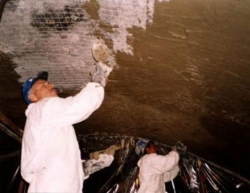
Protection of the basement from the water is one of the main tasks in its construction. It includes a whole range of measures to ensure the water resistance of the basement walls and floor, as well as preventing the rise of water inside the design along the capillaries. The most reliable waterproofing can only be performed at the construction stage, all subsequent work will be only half measures that will not give a long and sustainable result. But what to do if you bought a ready -made house and found that there is often water in the basement? What measures to take, what materials to use. Within the framework of this article, we will tell you how to make a waterproofing of the basement in the operated building and what materials to use for certain works.
- What can be the waterproofing of the basement
- Waterproofing basements: materials and technologies
- Waterproofing of the basement from the inside
What can be the waterproofing of the basement
Before moving directly to waterproofing materials, I would like to clarify what we will protect our basement from. In total, three types of waterproofing are distinguished: anti -napor, non -pressure and anti -capillary.
Anti -japorn waterproofing The basement is necessary when the groundwater level is above the basement floor, and sometimes the walls, too, or if there is a seasonal rise to such a level in the spring flood. Such waterproofing is equipped only outside the design of walls and floor. Materials are used that withstand the so -called positive water pressure. This is when water presses the material with its weight to the surface of the structure, for example, walls. But the waterproofing of the basement of the house from the inside with these materials is useless, since there is a negative pressure of water, to separate the material from the surface. In addition to everything, with high groundwater, it will not be superfluous to perform drainage around the basement to drain water into a waste -well or collector.
Removal waterproofing The basement consists in protection against water accumulated due to atmospheric precipitation or floods. Of course, if anti -napal waterproofing has already been performed, then there is no sense in the non -pressure. But if the level of groundwater on the site is quite low and there is no probability of its seasonal rise, then you can do with only non -pressure waterproofing measures, for example, to smear the floor and walls of the foundation with bitumen mastic.
Anticapillary waterproofing Designed in order to prevent water lift along the capillaries in the concrete walls of the foundation and floor. This will protect the designs of the house from destruction. If earlier, to protect the walls of the house from rising moisture, it was only smeared with bitumen or covered the top of the foundation before the arrangement of the walls, then today the use of penetrating waterproofing is gaining more popularity.
Waterproofing basements: materials and technologies
The modern market is saturated with various waterproofing materials. Conventionally, they can be divided according to the application method and the principle of action into several categories: coating, roller, hydrophobisators, penetrating or injectable. Each of them is good in its place.
Coating waterproofing materials
This very extensive category includes a variety of emulsions, a bitumen -based mastic, which can be applied to both cold and hot, thick -layer bituminous coatings, cement -based compounds, polymer coating materials.
Mastic They are made of special bitumen, which is ennobled by synthetic rubber, do not contain solvents. You can apply them to any strong stable bases: concrete, brick, plaster, stone and others, having previously moistened them. After the mastic dries, a seamless high -elastic film forms on the surface. Such a coating blocks all cracks, is not afraid of cold and heat, does not let water, resistant to aggressive environments. The basement waterproofing device involves applying mastic to the outer wall of the foundation to protect against ground and storm water. This material can withstand only positive water pressure. Although sometimes mastics are used to fill out deformation joints, so before buying, be sure to read the instructions.
For example, elastopase and elastomix bitumen mastics, which are also called liquid rubber, are applied to the surface of the floor and walls of the basement from the inside. But remember, the material is not able to resist the negative pressure of the water for a long time, therefore, if the external waterproofing of the basement is not performed, then over time, liquid rubber can break, there will be a leak.
Thick -layer bituminous coatings One and two -component are used only to protect the structures of the house from pressure waters, applied outside the walls of the foundation and before filling the basement floor. They are used on any mineral surfaces: concrete, brick, hollow blocks, sandstone, limestone, plaster, porous concrete and others.
The compounds based on cements can be conditionally divided into ordinary cement coating waterproofing, cement coating waterproofing with a penetrating effect and auxiliary compositions.
Ordinary cement coating waterproofing It is also called armor, it can be applied to any mineral surfaces. After application, some materials can create an elastic coating that will block the newly formed cracks even up to 2 mm wide.
Cement waterproofing with a penetrating effect It is used only on concrete surfaces of good quality. If cracks and capillaries are more than 0.4 0.5 mm, the material will not work.
Polymer coating waterproofing materials include polyurethane -based materials and universal materials based on MS polymers.
Polyurethane -based materials Used for durable waterproofing, used in liquid form, are one or two -component coatings that are applied and hardened in a cold state. It makes sense to apply these materials only to the side that is facing the water. In this case, it is preliminary necessary to carefully prepare the base: it should be clean, dry, without flaws that could violate adhesion.
Universal waterproofing but the basis of MS polymers combines the merits of silicone and polyurethane. This material appeared on the market relatively recently, but has already gained trust, as it provides reliable overlap of cracks up to 10 mm and waterproof at the level of thick -walled coating, and is applied as easily as the usual bitumen emulsion, again, to the side facing the water .
Environmental waterproofing materials
Enough waterproofing is performed using roller materials by gluing them to the base in several layers. To do this, you can use ruberoid, glassesol, glass -rubled, hydrostecloisole, glass, waterproof, hydrobutil and others. Before mounting on the waterproofing waterproofing, the surface must be carefully processed: aligned (irregularities are allowed up to 2 mm), dry, loaded with bitumen emulsion. The formed coating is sensitive to mechanical damage, so it is necessary to protect it with a clamping wall.
Hydrophobizers
These materials are a relatively new way to make a water -repellent surface. With a surface processed by a hydrophobizer, the water simply rolls. But in case of new cracks, the material is not able to heal them, and it penetrates the surface structure not deep, no more than 5 mm, therefore, it is washed out and eliminated over time. Gradually, water -repellent properties are reduced: if the material is on a water -based, then after 1 3 years, and if on solvents, then 5 10 years.
Penetrating waterproofing
It is used to ensure water resistance of concrete structures. The composition applied to the surface is a mixture of Portland cement, active chemical additives and thin milk quartz sand. It is necessary to apply it to a wet surface, while active elements react with water, as a result of which crystals are formed that fill all pores, capillaries and cracks in concrete and do not let water. The depth of penetration of crystals is from 15 to 25 cm, but some brands assure that their material is able to penetrate up to 90 cm deep.
Penetrating waterproofing is a great way to isolate the basement from the inside. But at the same time, he has several disadvantages: it is used only on concrete surfaces, concrete should be of good quality, with capillaries and cracks up to 0.4 mm depth.
When asking the question of how to properly make the basement waterproofing, pay attention to the fact that almost all materials offered by the market are suitable for external waterproofing: coating, gluttoen, hydrophilizers, liquid rubber and others, and penetrating waterproofing can be used for internal waterproofing. At the same time, the term internal waterproofing of the basement means protecting the basement from ground or storm water, as well as capillary. Because if you want to protect the basement from water, which may appear due to leaks of communications, i.e. Inside the basement, for waterproofing the floor, weapons, mastic and emulsions can be used.
Waterproofing of the basement from the inside
The situation when water enters the basement, and it is not possible to perform a full -fledged external waterproofing, not uncommon. Quite often, the external waterproofing of the foundation is either simply not, or it collapsed from time. At the same time, it is not possible to dig the foundation and carefully process its surface thoroughly due to the fact that at home they are too close to each other or for other reasons. That is why the owners of the houses are looking for the opportunity to waterproof the basement with their own hands without resorting to earthen work.
Important! We immediately want to warn that for high -quality protection against groundwater, waterproofing on the outside of the walls of the foundation will be required. Only in this way, moisture will not penetrate the walls and inside the basement, pressing the waterproofing material to the surface of the wall. If there is no external waterproofing of the walls of the foundation, the water will penetrate into the thickness of the walls, and then inside the basement.
With your own hands, waterproofing the basement from the inside may include several types of work, for example, anti -capillary protection of concrete walls and gender gender and protection with liquid rubber.
Penetrating waterproofing basement
Among all the materials of the penetrating action, one can distinguish the following:
- Mixtures that are applied to concrete surfaces both outside and inside structures to give water resistance;
- Mixtures and compositions for sealing seams, cracks, joints. Used in combination with the first mixtures;
- Quick -hardening compositions that can stop flowing in a matter of seconds;
- Additives in a solution of concrete, which are used at the construction stage.
Before treating the surface with a penetrating waterproofing inside the basement, it is necessary to clean the room and carefully prepare concrete surfaces. This is some difficulty in using penetrating materials, since to clean and moisturize concrete you will have to use special equipment or manually perform. If the capillaries of concrete are closed, the material will not be able to get inside.
Important! Penetrating waterproofing is applied only to wet concrete. It is better if it is freshly billed.
All cracks, cracks must be opened and cleared, and then filled with material for joints and seams, for example, with pumpeted.
Then, according to the instructions, a solution for walls and floor is prepared, for example, penetron, and applied with a brush or a roller with a layer of 1 2 mm. Then it is necessary to let dry and absorb with the first layer and repeat the operation. Entering the reaction of water, the material forms hydrophobic crystals, which spread deep into the structure of concrete by 10 15 cm, and sometimes more, clogging the capillaries and preventing the penetration of water not only into the basement, but also into the structure of concrete.
More details about the complex penetrating waterproofing of the basement video.
On the market, you can choose the material that is more suitable for certain conditions: hydrochitis, lakhta, squid, xipex, maxill, penetron.
Waterproofing basement with liquid rubber
As an additional measure for the penetrating waterproofing of concrete, the walls and gender of the basement can be treated with liquid rubber with modern polymer or bitumen waterproofing material.
For self -application, one -component materials, for example, elastopase and elastomix, which can be applied with a roller or brush without heating are suitable. Moreover, work can be carried out at any time of the year. The compositions are sold already in the form ready for use, just open the bucket and mix thoroughly.
To waterproof the basement with liquid rubber, the surface on which it will be applied must be cleaned of dust and garbage, drain, if necessary, and align it. In principle, thorough leveling is not required, since the material itself will close all the cracks and bulges, forming a membrane, but in the case of too large height changes, the material consumption will increase.
Then we apply a primer to the walls and floor, preferably the one that the manufacturer of the material advises. Next, open the bucket and mix the contents using a mixer nozzle to the drill.
We apply the material to the surface of the walls and floor with a roller, a spatula or brush, paying special attention to irregularities, cracks and chips. And leave to dry. After complete solidification, the material will resemble rubber.
Waterproofing with liquid rubber from the inside of the basement does not protect the walls from penetration into their water column. Over time, the concrete will be saturated with water to such an extent that it will begin to tear off the rubber from the surface. Although the manufacturer claims that rubber penetrates up to 15 mm deep into concrete, nevertheless, in the case of serious pressure of ground or storm water, this coating will last no more than 4 5 years.
Since such materials are not designed for negative water pressure, it is advisable to equip the clamping walls and make a screed of the floor with a layer of up to 50 100 mm. So you can guarantee the absence of leaks for a rather long time.
The internal waterproofing of the basement is just an additional, auxiliary measure. It is not able to provide maximum reliability. Therefore, at the first opportunity, it is still worth digging the foundation and performing waterproofing correctly. If soil waters are quite low, they never bother, then sometimes it is enough to carry out insulation from the inside with penetrating, polymeric materials or special cement -based plasters. But do not forget, this will not protect the walls from water accumulation.

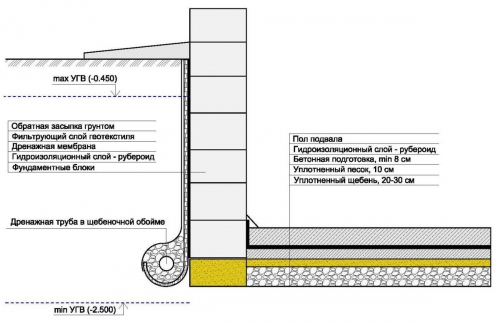
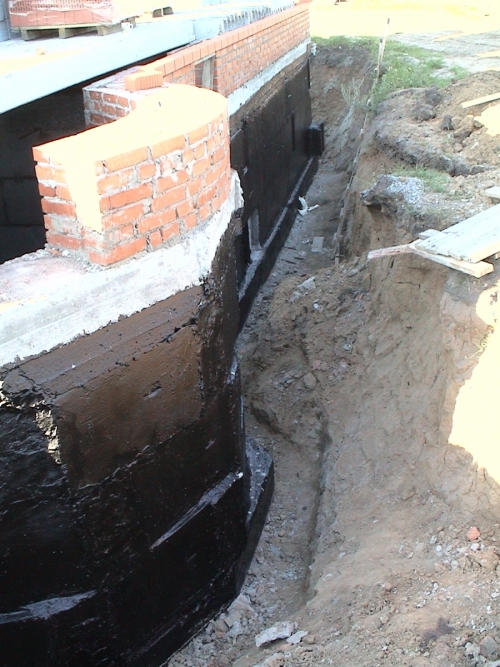
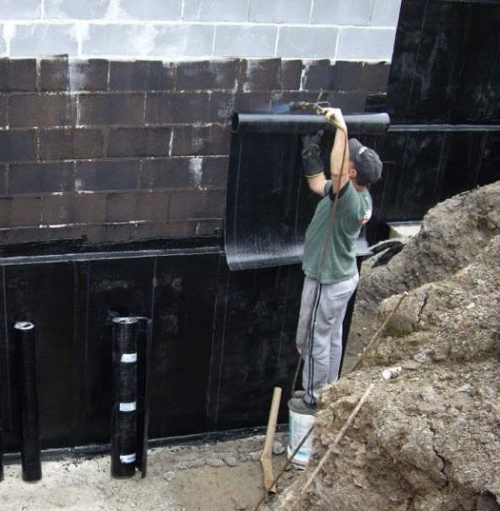
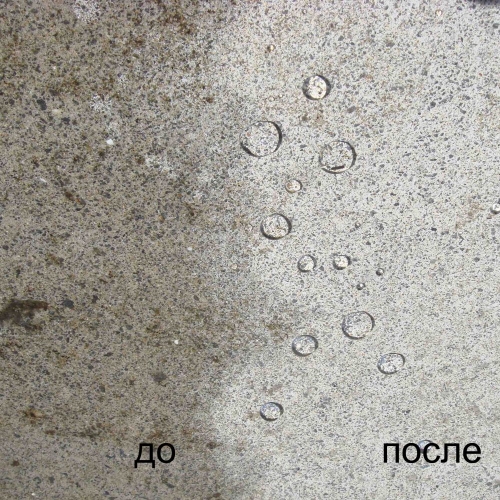
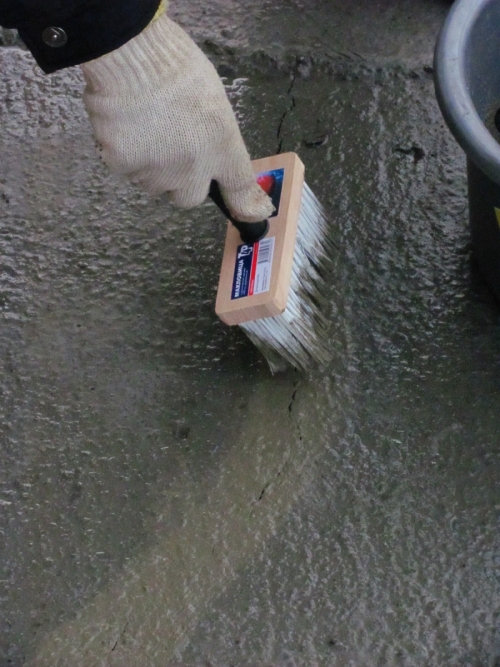
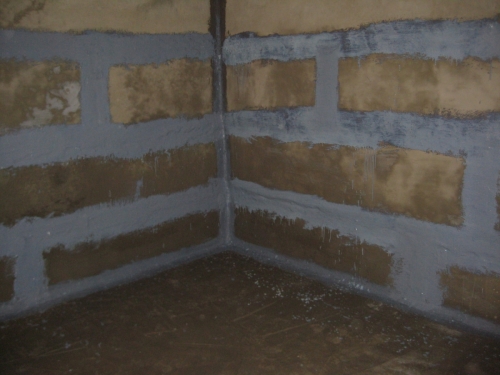
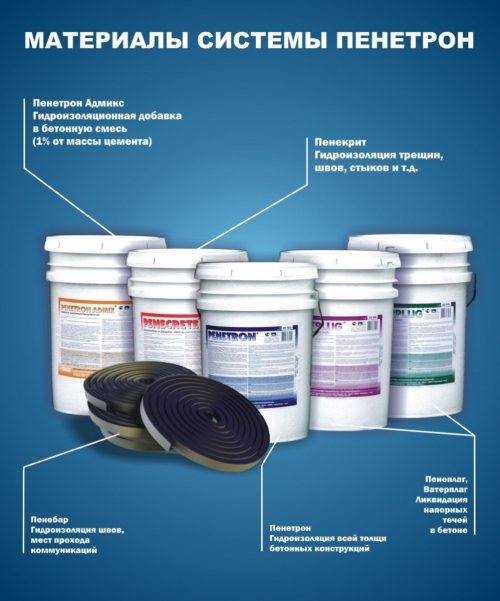
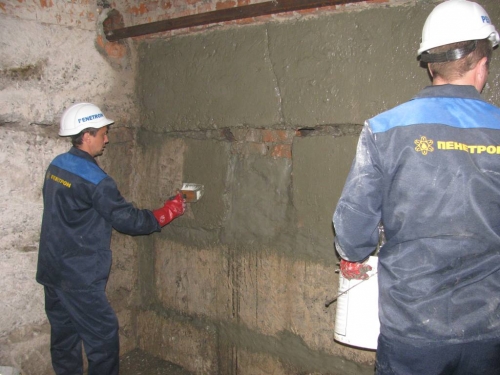

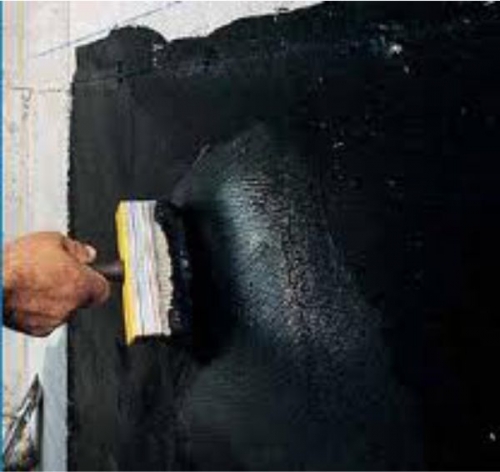
I completely agree on
I fully agree on penetrating waterproofing.
In my opinion, the best choice is for those who do not want to spend money on an expensive slandering the foundation from the outside. My situation: 5 years basement in water (spring-autumn). He invited specialists in Saransk (seizaries). We waterproof the basement in 14 business days. They used penetron and stoolerite. Like so. Penetron Admix added to monolithic floors. Hydroding in concrete. Two years - the basement of dry. I will make a finish and put the tile. I ordered work on the Hizard website in Saransk (www.gidrosar.ru).
I recommend them.
A couple of years ago were also
A couple of years ago there were also work on the basement waterproofing. The information was taken from the resource http://www.penetron-saransk.ru for the floors used concrete with the additive of admix. If you use, take the technical regulation for waterproofing when buying.
Good luck
Waterproofed by different ones
Waterproofed with different materials 2 basements (in his house and at the father -in -law). I liked the penetrating waterproofing calcitron (kalmatron.by their site). Less hassle for work and the effect is better
iavmi
iavmi
https://tornado-plumbing.com/
https://tornado-plumbing.com/